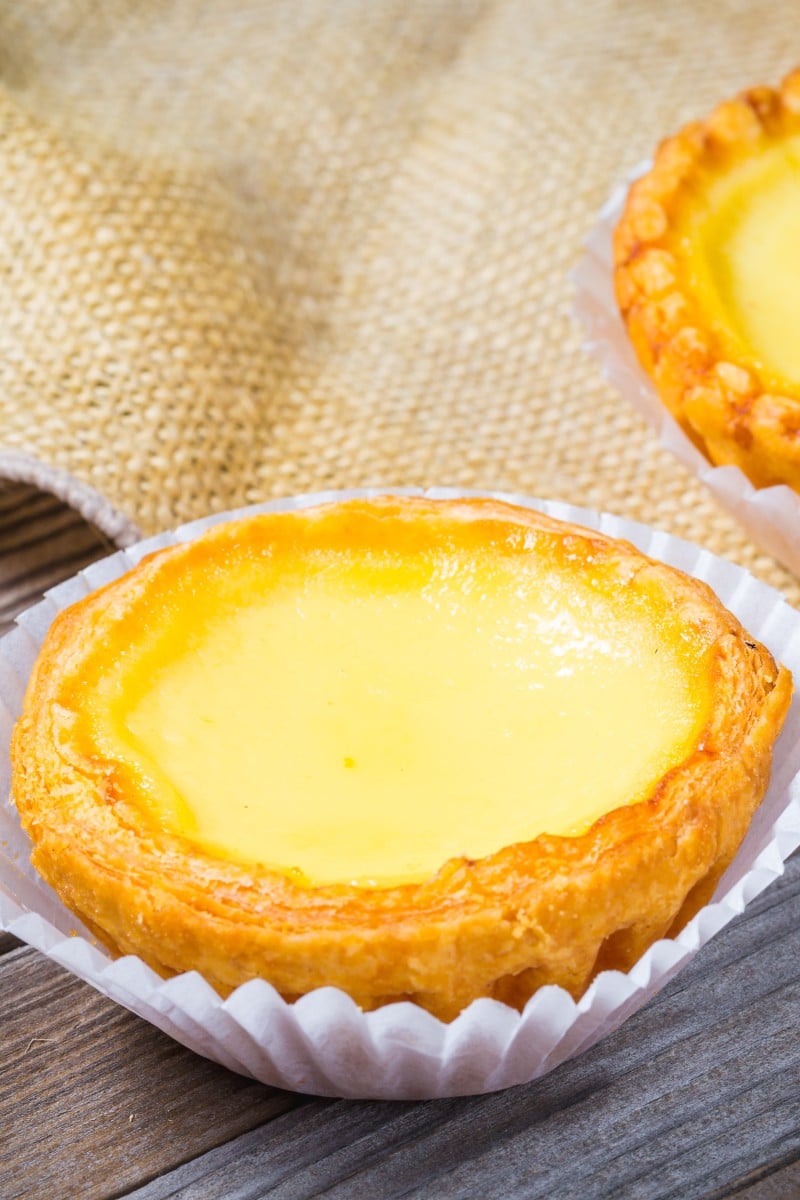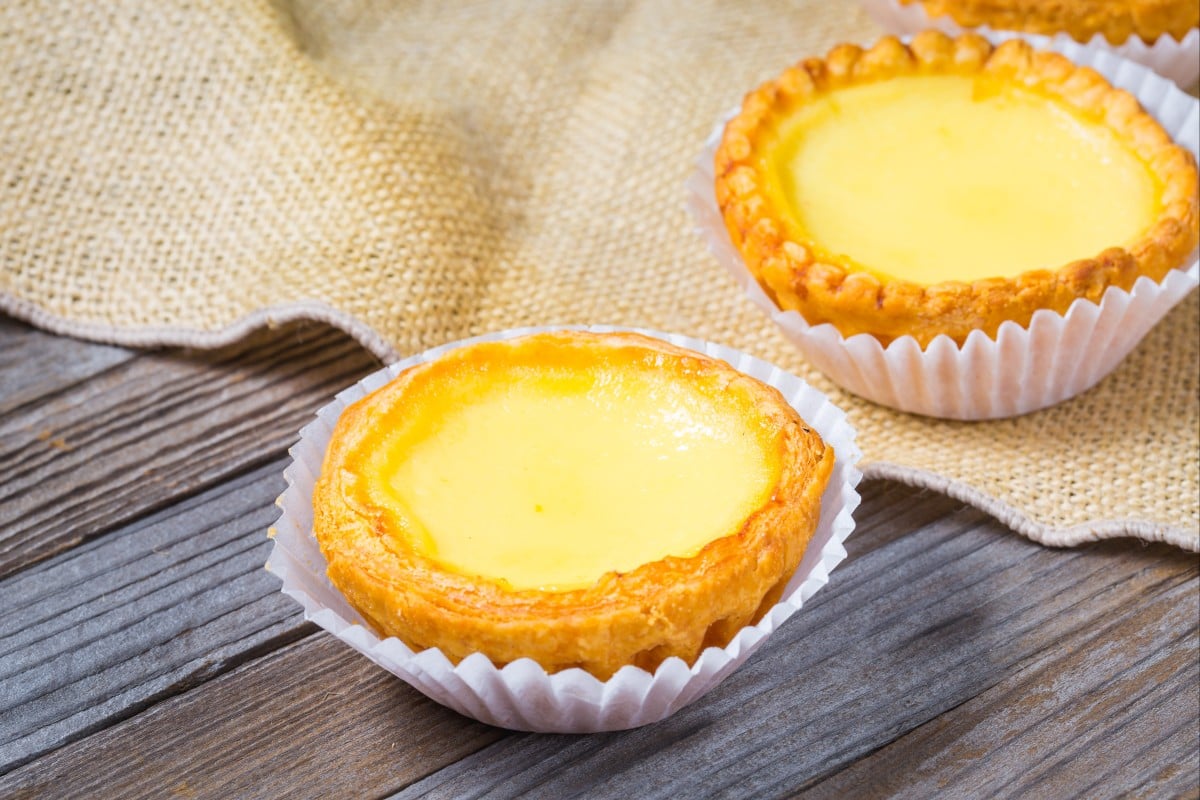
- The teatime staple is known for its smooth custard and flaky puff pastry, and you can make a 30-minute version at home using frozen parathas
- Every week, Talking Points gives you a worksheet to practise your reading comprehension with exercises about the story we’ve written
 Hong Kong-style egg tarts are known for their silky smooth custard filling. Photo: Shutterstock
Hong Kong-style egg tarts are known for their silky smooth custard filling. Photo: ShutterstockA teatime staple in Hong Kong is the egg tart – a delicious pastry with a flaky outer shell that holds a creamy but firm custard.
This tasty baked good is called 蛋撻, or daan tat, in Cantonese, and it can be found in bakeries across the city.
It is not clear where this treat originally comes from. Some believe the Hong Kong-style egg tart is a version of the British custard tart. The British one is made using crumbly shortcrust pastry instead of flaky puff pastry and is usually served cold.
Others think the daan tat comes from the Portuguese egg tart, called pastel de nata. Portugal’s tart has a flaky crust that is like the Hong Kong version. The two taste somewhat similar, but the pastel de nata has a caramelised surface, while the daan tat top is smooth and glossy.
A nutritionist’s take on curry fish balls and siu mai
According to Kathy Ng Yiu-fan, a senior nutritionist at Kat-Spirit Nutrition Centre in Hong Kong, the recipes for Portuguese egg tart and daan tat are slightly different. Pastel de nata is a bit sweeter because cream is added to the filling.
She added that daan tat’s silky texture was created by straining the custard mixture through a fine-mesh strainer to remove the bits of egg.
“The mixture typically consists of egg yolks, milk, whipping cream, sugar and vanilla extract. The dough used to make the puff pastry comprises flour, salt and butter,” the nutritionist explained.
Nutrition of an egg tart
One serving of daan tat contains 320 calories, 6.2 grams of protein, 17 grams of fat, 7 grams of saturated fat, 35 grams of carbohydrates and 11 grams of sugar. Meanwhile, each serving of Portuguese egg tart has 190 calories, 12 grams of protein, 13 grams of fat, 15 grams of carbohydrates and 15 grams of sugar.
“Both pastries are unhealthy due to their high calorie and sugar content. I would only recommend having egg tarts once in a while and to limit [it] to no more than one each time,” Ng said. As a healthier alternative to daan tat, she suggested apple pies since they are made with fruit.
For those who are craving fresh egg tarts, Ng said you could try making your own: “This gives you the option of replacing ingredients such as sugar with a calorie-free sweetener, and full-fat milk with skimmed milk.”
Here is an easy recipe that takes less than 30 minutes to put together.
Easy, healthier recipe for egg tarts
Ingredients (makes six)
-
3 frozen parathas
-
3 egg yolks
-
60ml skimmed milk
-
80ml light cream
-
25 grams of calorie-free sweetener
-
½ tsp vanilla extract
Directions
-
Cut each frozen paratha into half. Press them into a muffin tin to form the tart’s base.
-
Make the ends of the halves meet to form a cylinder. In a muffin tin, press each cylinder into a section. Then, place the tin in the fridge.
-
Preheat the oven to 200 degrees Celsius. Prepare the custard mixture by adding the egg yolks, milk, light cream, sweetener and vanilla extract to a bowl. Mix well with a whisk until you get a smooth, pale yellow mixture. Strain the mixture to remove any bits of egg.
-
Remove the tin from the fridge and fill the crusts with custard until each one is 90 per cent full. Bake for 20 minutes. Cool for a few minutes before eating. Serve while still warm.
Use our printable worksheet or online interactive exercises to test your understanding of this story.
